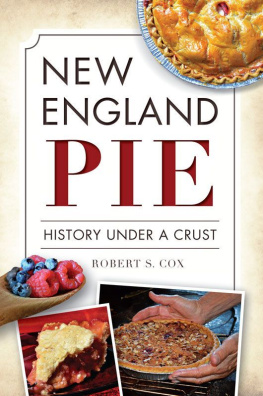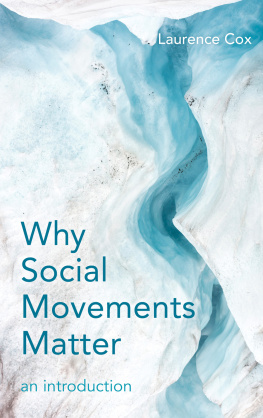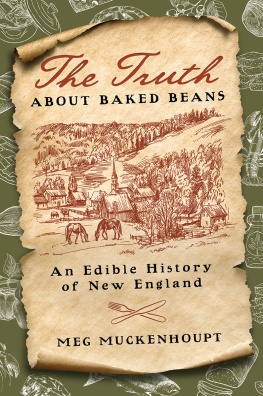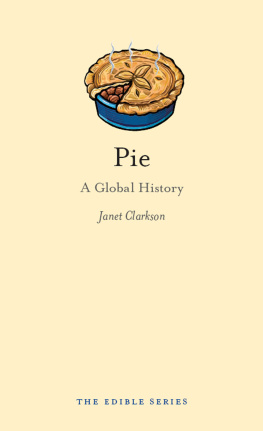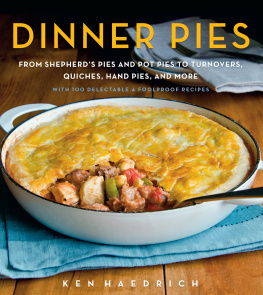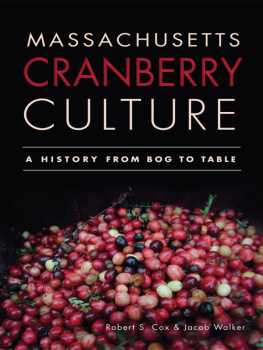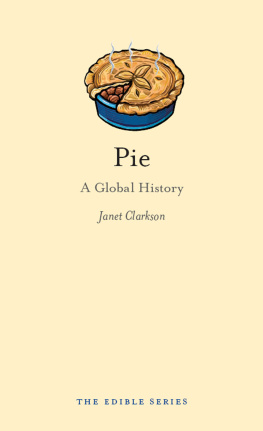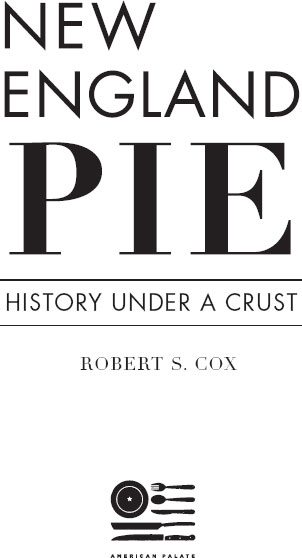
Published by American Palate
A Division of The History Press
Charleston, SC 29403
www.historypress.net
Copyright 2015 by Robert S. Cox
All rights reserved
First published 2015
e-book edition 2015
ISBN 978.1.62585.292.2
Library of Congress Control Number: 2015947047
print edition ISBN 978.1.62619.772.5
Notice: The information in this book is true and complete to the best of our knowledge. It is offered without guarantee on the part of the author or The History Press. The author and The History Press disclaim all liability in connection with the use of this book.
All rights reserved. No part of this book may be reproduced or transmitted in any form whatsoever without prior written permission from the publisher except in the case of brief quotations embodied in critical articles and reviews.
CONTENTS
INTRODUCTION
The pie is an English institution, which, planted on American soil, forthwith ran rampant and burst forth into an untold variety of genera and species. Not merely the old traditional mince pie, but a thousand strictly American seedlings from that main stock, evinced the power of American housewives to adapt old institutions to new uses. Pumpkin pies, cranberry pies, huckleberry pies, cherry pies, green-currant pies, peach, pear, and plum pies, custard pies, apple pies, Marlborough-pudding piespies with top crusts, and pies without pies adorned with all sorts of fanciful flutings and architectural strips laid across and around, and otherwise varied, attested the boundless fertility of the feminine mind, when once let loose in a given direction.
Harriet Beecher Stowe, Old Town Folks
Marie Antoinette made quite a splash back in the day when she dismissed a mob of French peasants with the words, Let them eat cake. As any good Frenchmen would, they responded with pitchforks and revolution and a touch of guillotine, but imagine instead that the queen of New England had said, Let them eat pie. The response, I suspect, would be different. Here, her good subjects would have less pitch to their forks, and they might call out, Why thank you, yes, I will have a slice. And that would be all the slicing there was that day. It would be wedges all around.
New England is a pie-loving culture in a pie-loving nation, and the fillings are deep. Anthropologists have observed that food and foodways are among the strongest cultural markers we have. Shared collectively within a culture, even a family, foodways are owned by all who participate in them, and they define who belongs and who does not. We are what we eat in a very real sense, and above all, what we eat (and do not) suggests who we wish to be. Eating traditional, eating healthy, eating local, eating exotic or eating a paleo diet all reveal attitudes toward where we fit in the world, and everything associated with food is part of the picture. Who prepares it and how, how it is served and when and how we write about it are all ways of claiming to belong and ways of distinguishing our culture from others. Learning to cook and eat is to learn where we fit in life, and it is no surprise that long after we surrender such markers as dress or art or even language, our food preferences remain strong.
New Englands pies are more than just treats; they are maps for understanding. Pie can be indulgent or frugal, a host for ephemeral fruits or a coffin for the leftovers of the long months of winter. They can be sweet or savory, delicate or robust, healthy or deadly. They are like the New England weather: if you dont like it now, wait a day. As we will see, pies in New England are expressions of the values we place on sociality, thrift, austerity and innovation; they can stand in for the bounty of our soils or our ability to make do with what is on hand.
It hardly seems necessary to define what a pie is, as we all think we know one when we see one, but since this is a book about pie, it is not out of place to try. The problem is that no one seems quite to agree, and from as far back as the fourteenth century, as The Oxford Companion to Food points out, the term has steadily evolved, shifting and shading from place to place and generation to generation. At first glance, we can see that the term has little to do with the filling: anything belongs in any combination. Meats, fruits, nuts, dairy, custards, puddings, live birds and even dancing girls are all permissible in certain contexts. Methods of preparation are no better guide. Even the origins of the word give us precious little to go on. According to the Companion, pie may be derived from magpie, the notoriously larcenous crow. It speculates that the term reflects the magpies habit of stuffing a hodgepodge of purloined goods in its nest, just like the odd hodgepodges our medieval forebears stuffed. That hardly stands for a definition.
Historian Janet Clarkson did as well as anyone in defining the term, although she came up with a mere two laws of pie. First, she wrote, pies must have pastry. No pastry, no pie. Yet even with this unequivocal statement, she admitted that actual results may vary. Europeans often insist that it takes two crusts to make a true pie, top and bottom, while latitudinarian Americans may slink by with just one. Still, nearly everyone agrees that some pastry crust is a good guideeveryone, that is, except perhaps for fans of the graham cracker.

The Mont Blanc of flour: a future crust. Photo by I. Eliot Wentworth, 2014.

Butter and flour on the mix. Photo by I. Eliot Wentworth, 2014.
Second, Clarkson insisted that pies must be baked, not fried, boiled or steamed. Going back far enough in history, she may have a point, as the pie was all about the oven. But we know that our southern cousins are willing to deep fry everything, including pies, and it takes little effort to find examples of pies that are chilled, frozen or, who knows, even sun-dried. Baking alone will not do.
Accepting that laws are made to be broken and moving on, let us abandon all hope of a definition and use the term pie pragmatically to refer to anything commonly called a pie, deducing the rest: pies are (usually) baked, they are (usually) baked in some kind of a dish (usually a pie dish) and they (usually) have a crust or crusts.
In some ways, the crust is the key, or at least it is the one thing that most food historians cling to as a defining trait. In early pies, the crust was little more than an enclosure for the ingredients, juices and flavors as the pie baked. Early crusts were a thick and dry-as-dust admixture of flour and water, intended to stand up both to gravity and the heat of the oven. It was, in effect, a medieval baking dish, a container, and not necessarily something to be eaten (though it may have been by the poor). Called coffins because of their function, enclosing the body of pie, rather than their effect on the consumer, these crusts had two additional, desirable effects: they were thick enough to exclude air from the filling and thus inhibit spoilage, and they were solid enough to make transport easy. They were, in effect, airtight mailing containers, some as small as a palm and others large enough to fit a pig. As lard (a rich mans ingredient) and butter (for the poor) became more common in the eighteenth century, crusts edged toward the edible, the flaky and crumbly, and when Crisco vegetable shortening was introduced in 1911 (and its arch-rival, Spry, in 1936), home cooks had a range of options, some of which were even pure. Crusts henceforth had the opportunity to shine on their own.
Next page
